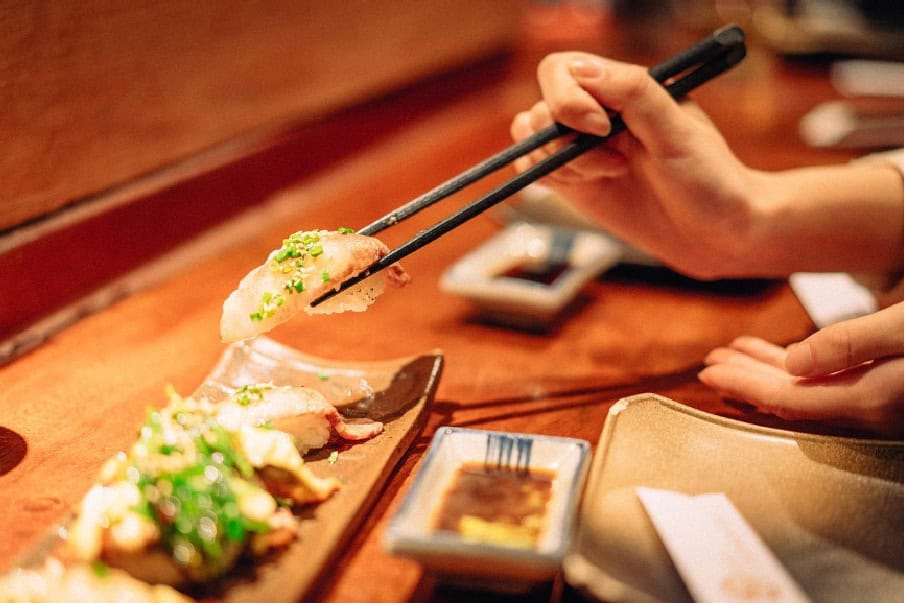Kyoto, Japan’s ancient capital, is a city that exudes grace and tradition in every aspect of its culture, from its impressive temples and serene gardens to its meticulous craftsmanship and, of course, its stunning cuisine. The culinary heritage of Kyoto is deeply rooted in the city’s history as a hub of imperial and religious life.
This heritage is best experienced through kaiseki, a multi-course meal that epitomizes the refinement and seasonality of Japanese cuisine. However, Kyoto’s culinary treasures extend beyond kaiseki, offering a diverse array of dishes that reflect the city’s unique cultural and geographical context. In this article, we’ll explore some of the most iconic culinary experiences that Kyoto has to offer.
1. Kaiseki: The Art of Japanese Haute Cuisine
Kaiseki is the pinnacle of Japanese dining, a multi-course meal that originated from the city’s traditional tea ceremony. It is considered an art form, where each dish is crafted with precision, balancing taste, texture, appearance and seasonality. The meal unfolds in a sequence that begins with light, delicate flavours and progresses to more robust dishes, each presented with an emphasis on harmony and beauty.
In Kyoto, kaiseki is deeply influenced by the region’s natural abundance and the changing seasons. Ingredients are sourced locally and are chosen based on their peak freshness. The courses typically include a variety of dishes such as:
- Sakizuke: A small appetizer that sets the tone for the meal.
- Mukozuke: Sashimi, often featuring fresh fish from nearby rivers or the sea.
- Takiawase: A dish of simmered vegetables and occasionally meat, showcasing seasonal produce.
- Futamono: A lidded dish, often a soup which complements the meal’s progression.
- Yakimono: A grilled dish, which might feature delicately flavoured fish or meat.
- Hassun: A platter reflecting the current season, often with a mix of ingredients from the land and sea.
- Shokuji: A rice dish served with miso soup and pickles, symbolizing the simplicity and wholesomeness of the meal.
- Mizumono: A light dessert, typically a fruit-based or sweetened confection
Kaiseki dining in Kyoto is more than just a meal; it is an immersive experience that engages all the senses. The dishes are served in a carefully designed order, often in a setting that complements the aesthetic of the food, such as a traditional ryokan (inn) or a serene garden restaurant.
2. Shojin Ryori: The Spiritual Side of Kyoto Cuisine
Kyoto’s rich Buddhist heritage has given rise to Shojin Ryori, a type of vegetarian cuisine that originated in the temples. Shojin Ryori is a humble yet deeply satisfying culinary tradition that values simplicity and mindfulness, using only plant-based ingredients. The meal typically includes a variety of dishes made from tofu, vegetables, seaweed and grains, prepared without strong seasonings to highlight the natural flavours of the ingredients.
One of the highlights of Shojin Ryori is yudofu, a hot pot of silken tofu simmered in a delicate broth, often accompanied by dipping sauces such as soy sauce or ponzu. The meal is usually served in a quiet, contemplative setting, allowing diners to appreciate the purity and tranquillity of the food. In Kyoto, many temples and traditional restaurants offer Shojin Ryori, making it a unique way to experience the spiritual side of the city’s cuisine.
3. Obanzai: Kyoto’s Homestyle Cooking
Obanzai is Kyoto’s version of home cooking, characterized by its simplicity, use of local ingredients, and a focus on seasonal produce. Unlike the elaborate presentation of kaiseki, obanzai dishes are rustic and comforting, often served in small portions that can be shared. This type of cuisine reflects the traditional Kyoto lifestyle, where frugality and respect for nature are central values.
Typical obanzai dishes might include simmered vegetables, grilled fish, tofu, pickles and miso soup, often prepared with Kyoto’s renowned kyo-yasai (Kyoto vegetables). These vegetables, which include varieties like Kamo eggplant and Shogoin daikon (a type of radish), are prized for their taste and quality. Obanzai is commonly enjoyed at family-run restaurants or izakayas (Japanese-style pubs), where the atmosphere is warm and welcoming.
4. Wagashi: Kyoto’s Sweet Side
Kyoto is renowned for its wagashi, traditional Japanese sweets that are often enjoyed during tea ceremonies. Wagashi are as much about artistry as they are about taste, with each piece carefully crafted to reflect the season or a specific theme. These sweets are typically made from ingredients like red bean paste, rice flour, and chestnuts, and are often shaped into delicate flowers, leaves, or other natural motifs.
Popular types of wagashi include yatsuhashi, a cinnamon-flavored rice cake, and nama-gashi, a soft, fresh sweet that is typically served with matcha tea. Kyoto’s tea houses and confectionery shops are the best places to experience wagashi, where the sweets are presented in a serene, contemplative setting which aims to enhance the overall experience.
Kyoto’s culinary treasures offer a deep and immersive journey into the heart of Japanese cuisine. From the refined elegance of kaiseki to the humble simplicity of obanzai and the spiritual nourishment of Shojin Ryori, each dish tells a story of tradition, seasonality, and a profound respect for nature. As you explore the ancient streets and temples of this captivating city, be sure to take the time to enjoy these culinary experiences, each offering a unique taste of Kyoto’s rich cultural heritage.

